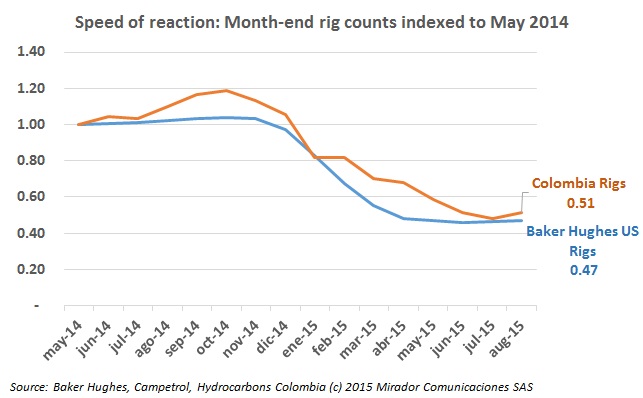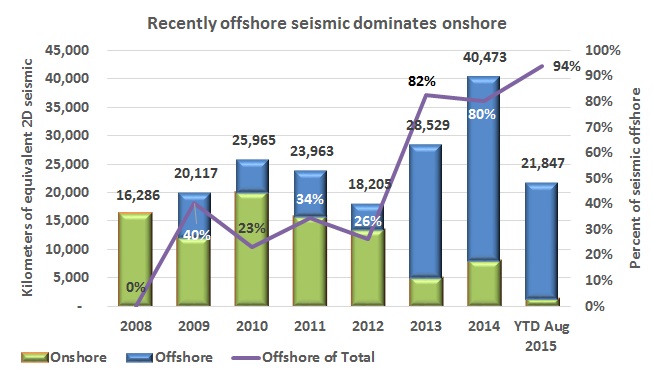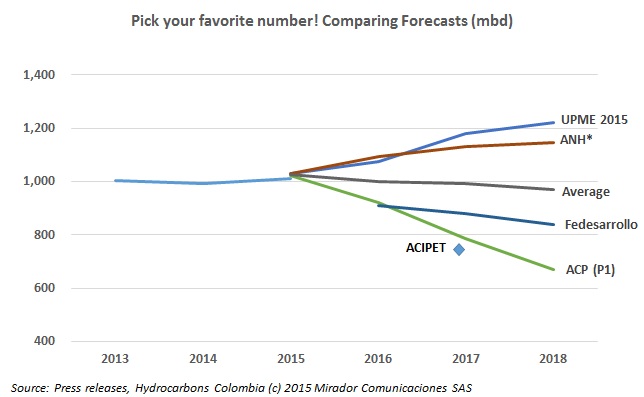
The Baker Hughes US rig count is more than ten times higher than the Colombian count so we indexed the month-end counts to see trajectories and measure speed of reaction to the dramatic decline in crude oil prices since last June 2014.

The president of the Colombian Chamber of Oil Goods & Services (Campetrol), Rubén Darío LIzarralde warns that “he who does not explore, does not produce”, citing a 19% drop in exploration investments among the eight largest operators in 2015.
Despite consistent reports on the sharp drop in exploration activities in Colombia, the president and CEO of GE’s (NYSE:GE) oil & gas division for Latin America, Patricia Vega, says the industry remains more active here than in other producing countries in the region.
Considering the recent findings in 2015 of Kronos-1 and Orca-1, last year, there are great expectations for offshore production, but the president of Schlumberger Surenco, Mauricio Vargas said that seeing production from offshore will take time.
The fall in oil prices has caused a rethinking of budgets and projects, cutting into the potential for unconventional resources but not stopping any programs completely.

Considering a fall of 70% and 80% in seismic work and exploratory wells and declining mature fields, Colombia’s daily production could fall as low as 750,000bd in just two years, says the executive director of Colombian Association of Oil Engineers (ACIPET), Carlos Leal.
Little or no information on biodiversity in Colombia’s offshore blocks and lack of a clear regulatory framework for offshore are two of the issues that are getting more attention following two offshore discoveries made by Ecopetrol over the last year.
Falling exploration activity remains one of the biggest concerns for the industry’s long term potential in Colombia, and the reduced goals set out by the National Hydrocarbons Agency (ANH) and the Colombian Petroleum Association (ACP) confirm this.
Ecopetrol (NYSE:EC) and Anadarko (NYSE:APC) have announced a hydrocarbons discovery at their Caribbean offshore exploratory well Kronos-1, a development which has the government hailing that its offshore strategy is working while other industry members urge caution as the fruits of the find are still years to come.
Offshore is an important frontier for the Colombian industry, but the high costs and long time before a successful find sees commercial production weaken its value for the country and industry, so more incentives for onshore exploration are needed, say experts and industry players.